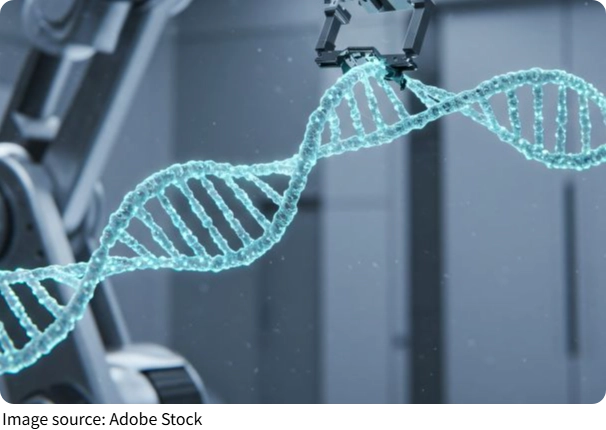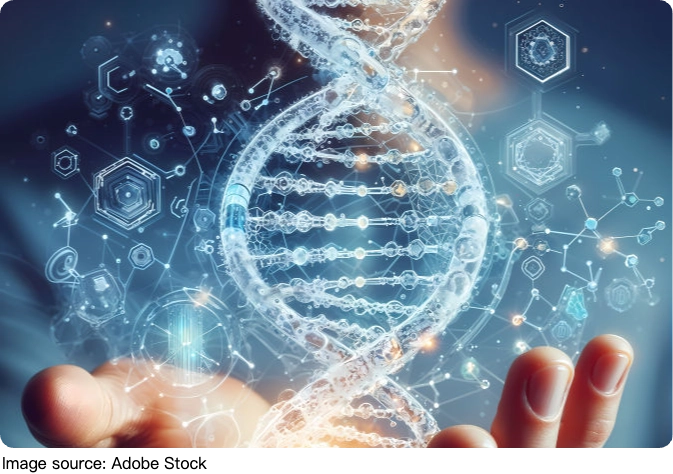Ataxia-Telangiectasia

Ataxia-Telangiectasia (A-T) is a rare, autosomal recessive neurodegenerative disease characterized by cerebellar ataxia, ocular telangiectasias, progressive neurocognitive decline, and immunodeficiency.
Although it affects approximately 1 in 40,000 to 100,000 live births globally, its pathogenesis presents unique challenges in translational medicine.
A-T arises from pathogenic mutations in the ATM gene, but mounting evidence underscores the role of environmental modifiers that shape disease severity, progression, and systemic complications.
ATM Gene Dysfunction: The Core Genetic Engine
The ATM gene (ataxia-telangiectasia mutated), located on chromosome 11q22.3, encodes a serine protein kinase vital for DNA double-strand break (DSB) repair, cell cycle control, and oxidative stress response. Homozygous or compound heterozygous mutations in ATM result in truncated or nonfunctional ATM proteins. The absence of this DNA repair kinase leads to unchecked genomic instability, which underpins many of A-T's systemic features.
More than 500 pathogenic ATM variants have been cataloged, including missense, nonsense, splice-site mutations, and large deletions. A recent study certain hypomorphic mutations retain partial ATM activity, resulting in atypical or milder A-T phenotypes. This genotype-phenotype correlation offers promising avenues for therapeutic stratification.
Beyond Genetics: The Epigenetic and Transcriptomic Dimension
While ATM mutations define the disorder, epigenetic regulation contributes substantially to variability in symptom onset and severity. DNA methylation profiles of ATM-adjacent genes have been shown to influence neural plasticity and inflammatory regulation.
Furthermore, altered expression of non-coding RNAs, such as microRNA-335 and lncRNA MEG3, has been implicated in neuronal apoptosis and cerebellar degeneration, according to a 2024 Nature Neuroscience article.
High-throughput RNA sequencing has revealed disrupted transcriptional networks in ATM-deficient cells, particularly involving the PI3K-Akt and NF-κB pathways. These perturbations suggest that ATM loss affects not only genome integrity but also broader signal transduction systems critical for cellular survival.
Environmental Stressors and Their Molecular Triggers
Environmental factors can exacerbate the molecular dysfunction associated with A-T. Ionizing radiation is especially detrimental, as ATM-deficient cells exhibit hypersensitivity to radiation-induced DNA damage. Even low-level exposures, such as diagnostic X-rays, may accelerate neurodegeneration or malignancy development in A-T patients. Due to this, many clinical guidelines recommend strict radiologic avoidance or modified protocols.
Oxidative stress, both endogenous and exogenous, intensifies genomic instability in ATM-mutant cells. Pollutants and certain medications increase reactive oxygen species (ROS), which cannot be adequately counteracted in ATM-deficient systems.
Dr. Michael Kastan, a leading DNA repair researcher, explains, "In ATM-deficient cells, both DNA repair pathways and ROS-detoxification systems are compromised, making radiation exposure and oxidative insults particularly harmful."
Moreover, chronic inflammation, whether from infections or lifestyle factors, worsens A-T progression by activating inflammasome complexes and promoting cytokine-induced DNA damage, creating a feedback loop of cellular stress and degeneration.

Immunodeficiency and Tumor Susceptibility: A Genetic-Environmental Intersection
A-T patients frequently present with immunoglobulin class switching defects and lymphopenia, making them vulnerable to opportunistic infections. Environmental exposure to pathogens, especially Epstein-Barr Virus (EBV) and cytomegalovirus (CMV), may trigger exaggerated immune responses and sustained oxidative injury.
Increased cancer susceptibility—particularly to lymphoid malignancies—is well-documented in A-T. Environmental carcinogens such as benzene, persistent organic pollutants (POPs), and diet-related nitrosamines appear to synergize with ATM loss to increase oncogenic transformation risk.
Recent bioinformatic analyses indicate that ATM-mutant lymphocytes show hyperactivation of MYC and mTORC1 pathways following exposure to such toxins, suggesting a potential oncogenic switch.
Emerging Therapeutic and Preventive Insights
Although no definitive cure exists for A-T, recent advances offer hope. Gene therapy using CRISPR-Cas9-based ATM repair is currently in preclinical testing. Additionally, small molecule ATM activators and readthrough compounds such as ataluren are under investigation for restoring partial ATM function in nonsense mutation carriers.
From an environmental standpoint, precision medicine approaches now emphasize exposure profiling. Early identification of oxidative stress biomarkers (e.g., 8-OHdG, F2-isoprostanes) and immune signatures can inform lifestyle adjustments and prophylactic interventions. Avoidance of environmental ROS generators, tailored antioxidant regimens, and immunization schedules calibrated to individual risk are under clinical review.
The pathogenesis of Ataxia-Telangiectasia is a dynamic interplay between immutable genetic mutations and modifiable environmental exposures. A singular focus on the ATM gene is insufficient to capture the full complexity of this disorder.
Dr. Richard A. Gatti, a leading expert in A‑T and DNA repair mechanisms, has stated in peer-reviewed literature, "The pathogenesis of A-T extends beyond simple loss of ATM function—it involves oxidative damage, immune dysfunction, and chronic cellular stress that together define the clinical trajectory."
Targeted intervention requires not only molecular correction but also real-time mitigation of environmental stressors that magnify the underlying pathology. Ongoing research must continue to dissect these layered mechanisms to pave the way for truly individualized A-T care.
-
 Vaccine: Prevent InfectionCan Tiny Doses Shield Millions From Deadly Outbreaks?! What Do Vaccines Really Stop?!
Vaccine: Prevent InfectionCan Tiny Doses Shield Millions From Deadly Outbreaks?! What Do Vaccines Really Stop?! -
 Genetic: Sensory Processing?Can DNA Really Twist The Way Senses React?! What Hidden Codes Are Causing Sensory Confusion?!
Genetic: Sensory Processing?Can DNA Really Twist The Way Senses React?! What Hidden Codes Are Causing Sensory Confusion?! -
 Bloating Vs InflammationIs That Swelling Just Gas Or Something More Serious? Learn How To Tell The Difference Now!
Bloating Vs InflammationIs That Swelling Just Gas Or Something More Serious? Learn How To Tell The Difference Now!